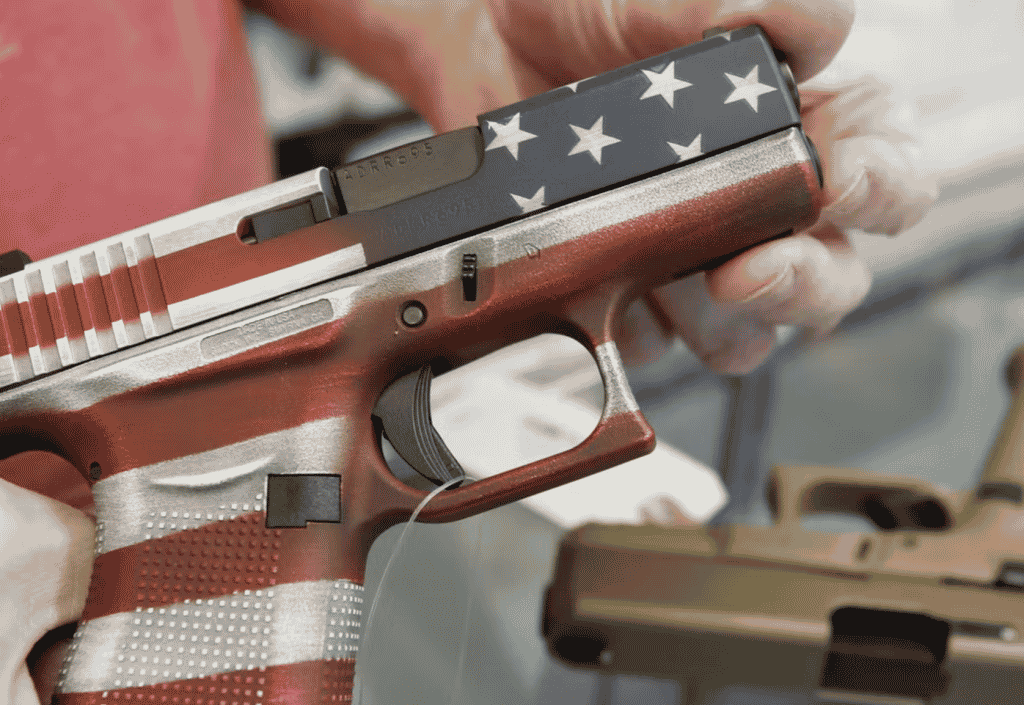Gun ownership has skyrocketed in the U.S., with nearly half of all gun sales during the COVID pandemic financed by the wallets of first-time buyers. But, like virtually every other consumer industry, the firearm market has a supply problem: Dealer shelves are empty. Brick-and-mortar sporting goods stores have nothing to provide the prospective gun buyer. Online gun sales, which often force buyers to pay higher premiums and special transfer and shipping fees, have cleaned out manufacturers.
Now, more than ever, gun buyers — experienced shooters and first-timers alike — are building their guns. They’re turning toward amateur gunsmithing, piecing together pistols and rifles from scratch. But is this even legal? Is it safe? Is it more affordable, or is it merely the only avenue prospective buyers can turn to?
First, the legality of the thing: Yes, it is, in fact, legal to build a firearm for personal use as a private individual if you can otherwise legally own a firearm. At least, U.S. federal law says you can. Some states (like New York and California) have placed severe restrictions on the practice, requiring a builder to purchase the core firearm component — the physical item within a firearm that is considered, well, the firearm in the eyes of the law — from a licensed dealer. Confused? Let’s explain.
An assembled firearm can be configured in many ways, so it is difficult to legally define. So, most state and federal laws identify a single, core component of a gun as the firearm itself. This component alone can’t function as a gun, but the law doesn’t differentiate it from an assembled gun you’d see at a dealer or range. This piece is the serialized, traceable component that, if bought from a dealer, requires an individual to pass a background check to purchase it.
All other parts of a firearm, like the barrel, grip, trigger, stock, and attachments that make the core component functional, are legally defined as accessories or non-firearm components. Those parts can be bought and sold like any other consumer product. That last bit is important:
Because manufacturers don’t have to serialize every single part of a gun — and because they don’t have to pay the high costs associated with producing those components as serialized products that are regulated by the Bureau of Alcohol, Tobacco, and Firearms — they can more distribute and sell those parts more easily than assembled, serialized firearms.
What does that mean for the amateur gun builder? He or she need only source their core, serialized firearm component from a dealer — or fabricate it themself, but more on that next — while they can purchase all the other parts required to assemble their new firearm from a wider selection of online and brick-and-mortar retailers. Retailers that sell non-firearm parts (like barrels, stocks, and accessories) don’t need to pay the high fees associated with being a licensed dealer.
It’s also easier for a manufacturer to make individual parts than working firearms. Retailers can thus source similar or identical parts needed for a particular gun build from different manufacturers more readily than completed firearm equivalents.
Basically, where it’s difficult to find ready-to-fire guns from conventional dealers, builders find it at least marginally easier — and often more affordable — to find individual parts sourced from a plethora of manufacturers to achieve the same result: Getting their hands on the rifle or pistol they want to own.
But what about that bit concerning the builder also fabricating the serialized firearm component? Sure, some manufacturers sell the unassembled, serialized version of their completed firearms to dealers merely to cater to this “build-it-don’t-buy-it” market. But amateur builders can, in fact, fabricate that part on their own, too. And, where manufacturers are having difficulty sourcing the raw materials to produce anything at all, amateur builders are turning to this practice.
We’ll use the ArmaLite Rifle (AR) platform for this example. It’s the rifle most often produced by builders “from scatch”. Using something called an AR 15 jig — an amateur gunsmither’s tool — the builder can take a raw, unfinished receiver and perform the fabrication steps required to make it a functional firearm by legal definition.
The process requires some other power tools and bits, and the finished product isn’t a functional firearm. It’s merely a stripped receiver, an empty cavity made from aluminum that can now accept those other components. The builder must then install those parts (including something called a lower parts kit) and the barrel and other bits required to make a working rifle.
If this all sounds complicated, well, that’s because it is. Fabricating a firearm from scratch has a high failure rate, and many will have to invest in at least one spare “raw” firearm core to ensure he or she produces a viable unit. Assembly also requires a plethora of specialized tools and at least a few hours, if not a few days’ worth, of time.
Even still, this new avenue to gun ownership is surging alongside commercial firearm sales, which continue to set records amid political pressure while stressing manufacturers’ output.
